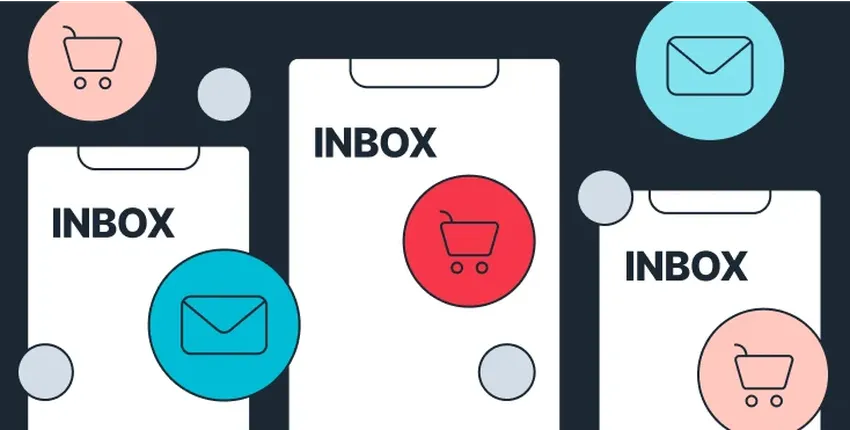
Last updated Thu Jun 12 2025
How to Collect Customer Feedback: a Comprehensive Guide
Companies that collect and implement customer feedback drive more revenue than competitors that don’t.
This clearly demonstrates how understanding your customer, their needs, and their perception of your brand is essential to success.
Get started:
Get website feedback with popup and form surveys
Easily create and deploy website feedback campaigns in minutes
★ Want to improve conversions on your website? This guide to website conversion funnel and welcome messages for customers can help.
What is customer feedback?
Customer feedback includes opinions, answers, and perspectives customers share about their experiences with businesses that reveal their satisfaction levels, pain points, unfulfilled needs, and suggestions for improvement.
Collecting customer feedback allows businesses to view their products and services through the lens of their clients and identify strengths to double-down on and weaknesses to address. Consistently gathering feedback is crucial because customer expectations constantly evolve.
Types of customer feedback
There are various ways to quantify and qualify the feedback you collect from customers. Each type of feedback provides unique insights to measure customer sentiment and experiences.
Customer satisfaction (CSAT)
This metric gauges overall satisfaction with your products, services, or customer experience using a simple rating scale survey. CSAT helps identify areas that are hitting the mark as well as those falling short of expectations.
CSAT score calculation:
Calculate the number of satisfied customers (those who rated you 4 or 5) and divide it by the total number of responses.
Net Promoter Score (NPS)
The NPS survey customer satisfaction score measures customer loyalty and brand affinity by asking just one question - how likely are you to recommend this company/product to others? Respondents are grouped as promoters, passives, or detractors based on their rating, providing a clear referral score of your net positive brand ambassadors.
NPS = % promoters - % detractors
For instance, if 60% of respondents are Promoters, 20% are Detractors, and 30% are Passives, your Net Promoter Score (NPS) would be calculated as 60 - 20, resulting in an NPS of 40.
Customer Effort Score (CES)
This metric shows the ease and efficiency of the customer's journey by focusing on their expended effort. CES surveys ask customers to rate the amount of effort required to complete a specific interaction or task, like making a purchase or resolving an issue.
Customer Effort Score (CES) ranges from 0 to 100.
It is calculated by dividing the number of customers who found their interaction easy by the total number of responses. For instance, if 65 out of 100 customers rated their experience as a 5, 6, or 7 on a 7-point scale, your CES would be 65.
Open-ended questions
Qualitative feedback from open-ended survey questions provides rich details in the customer's own words. These open responses shed light on the reasoning behind scores/ratings and uncover completely new insights on the user experience you may not have realized to ask about.
Product/service feedback
When collected systematically, specific feedback on product features, usability issues, and service gaps is invaluable for optimization. This granular feedback identifies exactly what to update, add, remove, or improve.
Using a combination of these feedback types paints a comprehensive picture of the complete customer experience. The quantitative metrics measure performance, while the qualitative responses provide the context and depth to truly understand scoring and take action.
Methods for collecting customer feedback
Effectively collecting customer feedback requires deploying the right methods - from surveys and social media monitoring to interviews and online reviews (you can always use customer feedback templates and tools for that).
The most robust strategies combine several customer feedback methods to gather both quantitative metrics and qualitative insights.
Popup surveys
Deploying strategically timed popups on your website or within your mobile or web app is an effective way to capture real-time feedback as customers engage with your product or service. This method offers versatility, allowing you to gather immediate insights that can help improve user experience and address issues promptly.
You can collect answers, have visitors rate their browsing experience, or comment on your website or products like this:
Or like this:
Email surveys
Sending customer satisfaction surveys directly to your customers' inboxes boosts visibility and engagement. Email surveys allow you to reach customers wherever they are with tailored questions.
Social media channels
With consumers flocking to social media, these platforms have become indispensable channels for soliciting feedback. Monitor brand mentions, comments, and reviews across Facebook, Twitter, Instagram and other relevant networks. Respond promptly, and use social listening tools to track conversations at scale.
Customer interviews
One-on-one interviews with customers foster in-depth, back-and-forth discussions that can uncover rich insights you may have never thought to ask about. However, interviews require more time and resources compared to other methods.
Focus groups
Bringing together a small group of 5-10 customers for a moderated discussion enables even deeper exploration of specific topics like new product ideas or usability issues. Focus groups are especially useful for uncovering nuanced feedback.
Online reviews
Pay close attention to the online reviews customers leave on third-party sites like Google, Yelp, TrustPilot and industry-specific review platforms. Respond promptly and professionally, and analyze this feedback to identify areas for improvement.
Direct feedback
Make it easy for customers to provide direct feedback by offering multiple touchpoints - including contact forms, live chat, voice support teams and soliciting feedback during service interactions. Using a reliable call center software solution can eliminate any barriers for customers looking to share their thoughts.
Each feedback method has unique strengths and uses. An effective strategy incorporates a mix of these methods to collect robust qualitative and quantitative feedback from customers.
Tools for collecting customer feedback
Wisepops. Create surveys on your website in exit popups, website surveys, embedded feedback forms, and drive visitors to feedback collection pages
Freshdesk: Solicit feedback during support interactions to improve customer service experiences
SurveyMonkey: Easily create and distribute surveys to gather detailed customer feedback
Hootsuite: Monitor feedback across social media channels for a comprehensive view of customer sentiment
Mention: Keep an eye on brand mentions and customer feedback across the web
The most effective approach is to establish an integrated tech stack, pulling together complementary tools tailored to your specific feedback collection needs. With the right tools in place, you can streamline the process of continuously gathering, analyzing, and acting on customer feedback.
How to analyze customer feedback
Simply collecting customer feedback is not enough - the real value comes from properly analyzing and acting on those insights.
Here are some key strategies for making sense of customer feedback:
Collecting actionable feedback
Not all feedback warrants action. Sort through the data to categorize feedback as actionable or non-actionable.
Actionable feedback provides specific insights you can address, while non-actionable feedback may be vague complaints, preferences, or customer opinions you cannot implement. Prioritize tackling the actionable feedback first.
Customer journey mapping
Map out the different touchpoints in the typical customer journey and analyze the feedback corresponding to each stage.
This allows you to identify pain points and areas of friction customers experience at various phases from awareness, to purchase, to customer support and retention. Journey mapping illuminates the areas requiring improvement.
Using metrics
While qualitative feedback provides rich context, it's important to also quantify sentiment through metrics like:
Customer Satisfaction (CSAT) scores
Net Promoter Scores (NPS)
Customer Effort Scores (CES)
Tracking how these metrics trend over time reveals if your products/services are moving in the right direction based on the improvements implemented from customer feedback. In order to have a broader spectrum of reviews, you can also monitor the media and check the sentiment regarding your product or service on social media platforms from its users.
Feedback categorization and themes
Systematically categorize and tag feedback into themes and topics as it's collected. To help automate this, you can use topic extraction features that AI content analysis tools have. This makes it easier to analyze sentiments and spot patterns around common issues, wants, or considerations for different audience segments or aspects of your business. Visualization tools can turn this categorized data into intuitive insights.
Best practices for collecting customer feedback
While collecting feedback is invaluable, you must manage it with integrity and respect for privacy. A single breach or misuse can destroy the trust and credibility you've built, and could also cost you significant legal action.
Transparency and consent
Clear communication
Before collecting any feedback, clearly explain to customers why you are requesting their input and how their feedback will be utilized. Provide details on the types of information being collected.
Explicit consent
Implement opt-in mechanisms that require customers to explicitly consent to providing feedback and having their data collected. Never assume implied consent.
Security measures
Data encryption
Any feedback containing personally identifiable or sensitive information must be encrypted both in transit and at rest using strong encryption protocols like SSL/TLS. The importance of data encryption cannot be overstated, as once personal information is exposed online, it can be incredibly difficult to completely remove personal information from the internet. Proper encryption helps mitigate the risks associated with data breaches and unauthorized access.
"Ensuring that all sensitive feedback is encrypted both in transit and at rest is crucial. Proper encryption not only protects personal information from data breaches but also ensures that once exposed, it's incredibly difficult to misuse or remove completely from the internet."
J.R. Tietsort, Chief Information Security Officer at Aura
Access Control
Institute robust access controls and authentication measures to ensure only authorized personnel can access and handle customer feedback data on a need-to-know basis.
Data Protection
Regulatory Compliance
Ensure your entire feedback collection process, data handling, and storage is fully compliant with all relevant data privacy regulations like GDPR and CCPA.
Data Anonymization
Remove or anonymize any personally identifiable customer information from feedback data that is not necessary for analysis and action.
Secure Storage
Store all customer feedback in secure, audited databases or cloud storage solutions like Sync or pCloud that offer advanced security controls and encryption.
Data Retention
Implement and enforce a data retention policy that deletes outdated customer feedback data once it is no longer needed for business purposes.
Ethical Practices
Voluntary participation
Never require customers to provide feedback involuntarily or make it difficult to opt-out. Clearly provide opt-out options.
Privacy respect
Only collect the minimum customer data required for the specific feedback needs. Avoid requesting extraneous personal information.
Building a trusting customer base is vital. Following these ethical data practices demonstrates your brand's commitment to protecting customer privacy when collecting feedback. In the unfortunate event of a data breach affecting your customers, it's important to know what to do if their identities are stolen. In turn, loyal customers will be more willing to offer honest insights when confident in your security measures.
How to apply customer feedback
The ultimate purpose of collecting customer feedback is to use those insights to meaningfully improve your products, services, and overall customer experience.
Analyzing the feedback is just the first step - implementing what you've learned is what drives real impact.
Incorporating feedback into product development
Customer feedback should be a driving force behind your product roadmap and feature prioritization. Give product feedback directly to your development engineering teams so they can address the most frequently mentioned issues, pain points, and new feature requests. Advocate for your customers' voices during planning discussions.
Establishing a customer feedback loop
Don't just collect feedback once and move on. Establish processes for continuously capturing feedback, analyzing it, making improvements based on it, then communicating those changes back to customers. This closed-loop system helps validate if the enhancements are resonating and gathers new feedback to fuel further optimization.
Luckily, you can collect feedback continuously with a good omnichannel strategy in place, which includes call center, live chat, email, and other channels.
Developing a Feedback Strategy
Having an ad-hoc approach to feedback collection is inefficient. Develop a long-term, comprehensive strategy that outlines the methods for regularly collecting feedback, from which customer segments, at which touchpoints, using what tools/channels, and how to document and disseminate the insights internally.
Engaging with unhappy customers
Negative feedback presents an opportunity. Actively reach out to customers who provided poor ratings or criticism. Aim to resolve their specific issues through personalized support.
This shows you truly listen to feedback and care about delivering better experiences. Successfully turning detractors into promoters creates vocal brand advocates.
Conclusion
Collecting customer feedback is a powerful way to understand your customers' needs and continuously improve your business. By leveraging the right methods and following best practices, you can gain valuable insights to drive growth.
Start implementing a customer feedback strategy today. Reach out to your customers, listen to their valuable feedback, and use their voice to provide exceptional experiences that keep them coming back.

Irina Maltseva
Irina Maltseva is a Growth Lead at Aura, a Founder at ONSAAS, and an SEO Advisor. For the last eight years, she has been helping SaaS companies to grow their revenue with inbound marketing.
Related articles

4/22/2025
Learn how to re-activate your subscribers with re-engagement emails. See re-engagement email examples with best practices.

6/12/2025
Discover 10+ proven and new B2B lead generation strategies and ideas for businesses from any industry.
